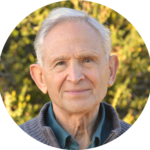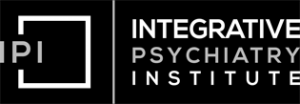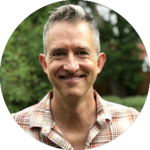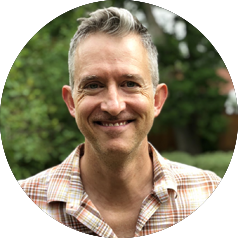Pioneer of Advanced Neurofeedback – Dr. Siegfried Othmer – HPP115
In today’s episode, we are joined by one of the pioneers of advanced neurofeedback, Dr. Siegfried Othmer. Join us as we get into an exciting conversation about how the brain works and how it behaves by measuring brain activity using EEG and how much of an impact it can bring towards integrative psychiatry.
Show Notes:
Getting to know Dr. Othmer – 02:12
So you know, I’m a physicist. My wife studied neurobiology at Cornell after getting her BA in physics, and really wanted to get into neurobiology. And so we had our first son, while we were at Cornell. And he very quickly developed behavioral problems that got progressively more severe.
The Brain Responds to its Own Reflection – 09:28
And so the secret is that the brain has to see itself performing the skill in order to enhance the skill, whether that’s playing the violin, shooting baskets or whatever, or, you know, golf cutting. So the brain has to just keep seeing itself perform in order to improve its own skill and all of that displays voluntary control.
A Significant Discovery – 13:30
And so it turns out that this is really the field, the domain that is of greatest interest, therapeutically. The EEG, yes, we can train cognitive function, we can train vigilance and attention and learning disabilities and stuff like that. Lots of things. But the core issues of whether our nervous system is stable, or resilient, and responsive, and so forth. That’s organized at the low frequencies.
The ADHD Problem – 27:13
So basically, ADHD should be actually a diagnosis of exclusion. Namely, you only use it when there isn’t a better explanation. But of course, the problem is the reverse has occurred. It’s a diagnosis that’s easily given. And then may overlook the very thing that Gabor Mate was pointing out, namely, you may be really, really dealing with a trauma history and Miss labeling it as just an ADHD problem.
Treating Clients – 35:05
In order for the person to have access to these resources to be oriented to the outside world, that system has to be in a calm and well regulated state. And that’s the objective. So calmness is sort of the first operative word in our conversations with clients.
Full Episode Transcript
SPEAKERS
Dr. Siegfried Othmer, Dr. Will Van Derveer
Dr. Will Van Derveer 00:07
Thank you for joining us for the Higher Practice Podcast. I’m Dr. Will Van Derveer with Keith Kurlander, and this is the Podcast where we explore what it takes to achieve optimal mental health. Well, Siegfried Othmer, welcome to the show. It’s great to have you here.
Dr. Siegfried Othmer 00:26
Yeah, I’m happy to have the opportunity. I think this is a natural method for integrative psychiatry. And that’s probably how it’s going to enter psychiatry is through integrative psychiatry, rather than through traditional pharmacology, the practice of pharmacology.
Dr. Will Van Derveer 00:45
Right. Before we got started and started to tape here, we were talking a little bit about the challenges of penetrating the fortress, so to speak, of conventional points of view, and how difficult it can be to disrupt a paradigm. And you’ve had significant challenges along the way in doing that and I want to thank you for your persistence and willingness to keep trying, after all these years and I can relate to some degree as an integrative psychiatrist, and integrative psychiatry educator about how difficult it can be to walk into audiences and present things that don’t fit with the conventional model. For example, I used to teach an integrative psychiatry course for the residents at the University of Colorado. And the course was canceled because of the lack of evidence of the information that was being presented to the residents. And so, you know, that was a minor, let’s say wound on the journey, compared to some of the things that you’ve faced, but maybe you could start with giving us a context of your journey with what you’ve been working on with EEG and just the the overall course of the shifts in your thinking and where you are today, where you started in the beginning.
Dr. Siegfried Othmer 02:05
Yeah. Okay. So maybe I’ll start with where we started, just by way of introduction. So you know, I’m a physicist, my wife studied neurobiology at Cornell after getting her BA in physics, and really wanted to get into neurobiology. And so we had our first son, while we were at Cornell. And he very quickly developed behavioral problems that got progressively more severe. And he was just sort of a mystery child, nobody, no professional really understood what was going on. And of course, we as parents only, were only given a behavioral model, right? It was our bringing, our problem to get this child to behave. And it really was not in his power. And so we were, we put a very heavy trip on him. This is Brian, you have to know, you have to learn to behave and and at one point, he says, Well, I, I must just be an evil person, because he knew better than we did that he couldn’t control his behavior. So he was thrown out of school at age eight, right? No, this doesn’t happen to ordinary children. And so long story short, this forced a reappraisal. Our pediatrician, fortunately, suspected a neurological involvement and started putting him on belay and then later on Tegretol. And that calmed his behavior to the point where it was manageable. It was still very difficult. There were still rages, and so forth. And so life was not easy. It was, that’s what we lived with for nine years. He went to high school in a special school. And then we came upon this neurofeedback, which actually had been developed, discovered, not very far from our house here, our home here and support for that, in the San Fernando Valley, this apologia Veterans Administration Hospital right here. And there was a practitioner in Beverly Hills. And we heard the story. My wife said, Well, I’m coming. And sure enough, this turned out to be transformative for our son. We also did the training, and we all benefited so we were immediately immersed in this. I said, Well, this is powerful. Why does the world not know about this? This was all in the very shadow of UCLA Medical School, right? Beverly Hills is just right there. But basically, the work was not accepted with neurology because it was a behavioral method. It wasn’t gonna go anywhere within neurology. So the literature, early literature is all about epilepsy, and neurology wasn’t paying attention. And then further development was in ADHD. So here we were confronted with this and while while I said was being treated my wife who again, you know, was a neuroscientist, watch the comings and goings of other clients, headed your clients, people with total amnesia, children who couldn’t speak, and she said, this is like Lourdes, you know, oh, my goodness. So the practitioner was emphasizing work with traumatic brain injury. And her frustration was that minor traumatic brain injury basically wasn’t being accepted at that time. It was not taken seriously at that time. And so that actually gave her an opening because nobody was paying attention. No medical practitioner felt threatened because somebody down the street was working with traumatic brain injury. Those are people that nobody wanted to see, you know, they still had symptoms, years after the, after the injury. Nobody knew what to do. So she basically made her reputation among people who had no medical records. And then we watched all this, this is Oh, my goodness, we just have to get involved because her if it’s instrumentation was primitive, her knowledge of this was primitive. She had a master’s in education, I mean, and yet she hadn’t had hold of this powerful tool, right? Oh, my goodness. So we got involved, and formed a partnership and then fell apart after a few years than we were on our own. And this new instrument sat in our living room and what now? So we got into this seriously, and then it developed. So what, what is this about the core issue that’s been neglected? I think, by practitioners, this issue of neuro regulation is simply our regulatory regime, which is hierarchically organized. And the top of it is, of course, our cerebral network. And so, you know, here we are plowing this new ground that nobody else was paying attention to. And it’s been quite wonderful.
Dr. Will Van Derveer 06:12
Well, it really struck me when I was reading some of your work around orienting away from king of the old skin Aryan perspective of basically, you know, crude behaviorism, toward this bottom up regulation perspective, and the neurological apparatus that has the task of regulating itself, and struggles to do that. And the way that you framed EEG is, or I should say, maybe neurofeedback, if that’s the right term for it, and from wrong, as a way for the brain to sort of reflect on its own capacities for self regulation.
Dr. Siegfried Othmer 06:49
Right, right. So yeah, so what has gradually emerged, we started with his operating conditioning model. And that of course, happened because the work originated with animal work. And so this Canarian model was invoked in the 1970s. And so that led you know, that was the way to get Neurofeedback accepted was to basically use the tools that were already accepted, which is operant conditioning, early work was with cats, and monkeys, and so forth. And that put the technique on the map, then when it emerged that this was actually possibly helpful with seizures, and that came out of the cat work, then the interest shifted to the human subjects. And the operant conditioning technique was simply transferred to human subjects, which sells the brain a little bit short. A little bit. Yeah. But you know, we felt, again, science is often you know, tethered to history, you want to be conservative in what you tried, you were going to have a theoretical basis for what you try. And so we were kind of tethered to the operant conditioning model for a while. But then we realized the brain is doing this faster than it should. If operant conditioning is the mechanism it couldn’t be happening this fast. We were seeing single session effects with infants that were near drowning victims, and several years old, I said, How is this even possible?” And so we realize that somehow the brain is getting more information out of the signal that we’re giving it than what we think we’re providing. That was the secret, then to this new discovery, that the brain was actually taking charge of the process, we thought we were in charge of getting the brain good with the proper feedback. And the brain says, Actually, I’m looking over here, you know, and what happened is that the brain is it was looking at the dynamics of the EEG, rather than just these occasional discrete rewards, you know, you’re getting rewarded for doing the right thing in the last three seconds, which is hard for the brain to figure out, it’s hard to treat for the brain to get the correlation. But of course, when it’s looking at its own dynamics, then it says, well, that’s just my dance, you know, that’s me, I recognize that. Now, that doesn’t have to be the case. But it was the case. The brain recognizes its own EEG as self. And now, this leads to Neurofeedback in what’s basically a skill building model where or by analogy to the development of motor skills, it’s the best example. So that dancer looking at herself in the full length mirror at the studio is engaged with her reflection, and adjusting her movements and so forth. But of course, the brain underneath it all is doing this and is refining the movements beneath the level of consciousness. And so the secret is that the brain has to see itself performing the skill in order to enhance the skill, whether that’s playing the violin, shooting baskets or whatever, or, you know, golf cutting. So the brain has to just keep seeing itself perform in order to improve its own skill and all of that displays voluntary control.
Dr. Will Van Derveer 09:48
So then the EEG pattern or the responses back to the brain, from you know, in real time from what’s being measured, is the mirror in the analogy is that correct?
Dr. Siegfried Othmer 10:01
Yeah, that’s the mirror. So the EEG is basically reflecting back to the brain in real time, it dances at this frequency. And now it turns out any frequency provides information to the brain. But then the next discovery was that some frequencies are more equal than others. That’s then another core organizing principle, that the brain underneath it all, you know, if you look at the EEG spectrums, all the frequencies are there. But some frequencies seem to be what the brain uses to organize the entire frequency spectrum. And nobody had any reason to think that this existed, right that, in fact, it’s not in the literature except where we put it there. You know, no one else is talking about this. There’s actually a theoretical paper out of a British Journal philosophical journal that is entirely theoretical, which ends up aligning with our model, but there’s no other paper out there on this topic. So we have the special frequencies, which we zero in on, and then the brain gets more information out of that, because those are the frequencies that it uses to organize the whole frequency domain in our understanding at this time.
Dr. Will Van Derveer 11:04
So let me ask you a couple questions there. Because I am one of the more ignorant people maybe in the audience, I don’t know how you know, how much people know about the frequencies, you know, I’m familiar with, you know, the standard ones, alpha beta, theta delta, or I should probably say Beta Alpha Theta Delta in that order. But when you talk about a frequency that sort of organizes the other frequencies, can you tell us more about that? What is that as is? Are we talking about gamma frequency? Are we talking about? What are we talking about? Exactly?
Dr. Siegfried Othmer 11:37
Right. So the fundamental division is that basically the EEG range organizes the dance that we execute in real life, you know, our activity, movement, thinking, and so forth. That’s the text of our lives. The EEG organizes the text of our lives. But then there’s the context. What state are we in as we are watching the movie, as we’re watching a ballgame as we are engaged, what is the state of our autonomic nervous system, etc. And those are steady states, those things move slowly, right? They’re capable of responding fast in emergency situations, but by and large, they hang out and are relatively stable for, and that’s us, you know, we know ourselves to be either very stable, or maybe a little volatile. That has to do with that low frequency domain. So this is the low frequencies, way beneath the EEG. Now, it turns out, you see that that signal is much bigger than the EEG. But people of course, we’re interested in the EEG. So what do you do? Well, very easy, just throw all that stuff away, you filter it out, you just ignore all the low frequency. So basically, you know, in the neuroscientists, a few neuroscientists that existed back in the 60s, they were studying this stuff, but then it basically fell into a black hole. Nobody studied this anymore, people focused on the EEG and ignored all that stuff that was below there. And then in the 60s, this was sort of the 30s to the 60s. In the 60s, then there were a few revisits of the slow regime through the contingent negative variation and that kind of thing evoked potentials, but that, again, was transient behavior, right, which refers to our EEG range. It did not bite into the apple, which is this low frequency regime, which governs the way our nervous system hangs out. And so it turns out that this is really the field, the domain that is of greatest interest, therapeutically. The EEG, yes, we can train cognitive function, we can train vigilance and attention and learning disabilities and stuff like that. Lots of things. But the core issues of whether our nervous system is stable, or resilient, and responsive, and so forth. That’s organized at the low frequencies. And so what happened is, over this course of 30 years that my wife is doing this, and this is really my wife’s story. She’s a neuroscientist, and I just get to write about it because I have the PhD. So it was a gradual emergence of the realization that pay dirt was actually at the low frequency. So it was a slow march, once we realized these special frequencies exist, we were looking for them with every client. And turns out the most challenging clients tended to have the lower frequencies that were catered for us for them. And so eventually, we were bumping down to, you know, where the EEG interpretation runs out, which is point five hertz, maybe point one hertz. And so things run out of steam at about point one hertz, what to do, while you get rid of those filters that throw away all that lovely signal down below. low point one. So we really are in the low frequency regime, I mean, you know, less than 1.01 hertz, that kind of thing. So now, you’ve got this slowly varying signal that would bore anybody to death, you know. So what do you do with how you reinforce that? And so we’re basically forced into the kind of feedback we’re doing now, which we call endogenous neuromodulation, which is where the brain simply watches the signal. Because after all, that’s its stance, and the brain is your see cannot lose interest. Because once it’s recognized that signal belongs to me, then it assumes responsibility for that signal, right? It owns it, it says, Okay, well, I have now I have to pay attention, it naturally assumes responsibility. And an analogy here is, is driving a car, for example. And we turn the handling of the steering wheel over to our brains, we’re not worrying about which way the car is pointed, the brain has taken care of that inside rotate. And so boredom doesn’t enter it. And as long as the brain, you know, is awake and alert, it will do that. And we don’t have to, you know, reward it, we don’t have to instruct it, whatever the brain says, Okay, I got the job of keeping you alive. And so by the same token, if we give it this low frequency signal, and feedback, we might be bored with it. But the brain says, Yeah, but that’s me. And if we tune into these special frequencies, then the brain is really interested, because working with it is very effective. And then this keeps going, because of that hierarchy of frequencies, and it turns out that when we’re dealing with the most challenging clients, you know, trauma cases and head injury cases, and so forth, that might take us to very low frequencies, indeed. And it’s very specific, you know, you change the frequency a little bit, and they’ll tell you that they’re unhappy, and then you can change back to the right frequency. In fact, the only evidence we have of the right frequency is what that client tells us. He says, I feel better at this frequency. Okay, then we’ll train there.
Dr. Will Van Derveer 16:41
Interesting. Well, so very personalized, very individualized treatments. And it sounds like you’re not other than the feedback of this feels better or I you know, I feel a little better in this frequency. You’re not training in any kind of traditional Neurofeedback sense, like you were saying about the higher frequencies or cognition etc.
Dr. Siegfried Othmer 17:05
Right, there are no, no overt reinforcements. There’s another element that is traditionally present in neurofeedback, which is called inhibit based training. So when the brain goes goes out of line in the EEG range, and you have these bursts of inappropriate activity, then traditionally, in neurofeedback, we call the brain’s attention to that is sort of a cueing to its indiscretions to its slight momentary excursions into dysregulation. And so that remains true so that we still give the brain these cues with respect to this transit excursion center. dysregulate says that the observable in the EEG range, but the meat of the saying of the whole treatment occurs at this low frequency range.
Dr. Will Van Derveer 17:50
And I would gather, and please correct me if I’m wrong here, it’s just a guess that when we’re talking about training at this ultra low, or I guess you would say infra low frequency, it’s very different. It’s just kind of landing on me how different this paradigm is from working at the higher frequencies to train different things. You’re not working with a database of a so-called normal pattern, you’re really working with what actually feels more regulated for that individual at that frequency?
Dr. Siegfried Othmer 18:22
Right. And let me just pick up on that. You see, the fact is that even when we were working in the EEG range, you know, for a couple of decades, we were not relying on brain maps, we were always doing mechanisms based training, which is basically, you know, functional neuroanatomy was telling us where it would be a good place to put our electrodes, we put our electrodes there and did what we could. So we were always in this other mode of training, which was actually the original mode and research when the QEG came along, in the early 90s when it first became accessible to normal mortals, you know, for something like $20,000. You were in business. At that point, it looked like manna from heaven for the people in the field says okay, now we know how to do scientific neurofeedback, you know, and it was almost there was essentially no data it was basically just a shift in the belief system. Well, this has to be the way to do scientific neurofeedback. Well, it turns out that the Ag reveals some things that are critically important to us, but other things not. And this gets to the critical issue. You see in QE G. How did they get started? It got started by a right John, actually at UCLA here. He got involved in that when he first was here at the Brain Research Institute, which is where just a couple of years later, my wife was working with her cats. So it was old physics. In other words, you extract from the QEG, those things that are not only true today, but if you look at tomorrow, you’ll find the same thing, right? In other words, the variant is about that EEG. And it turns out you’re See, that’s the least interesting part. Yes, there’s information there. And we do the same thing in fMRI and so forth. We find At the very least we find the steady state connectivities, and so forth. And that’s of interest. But when it was a far greater interest you see, for Psychiatry and Neurology the dynamics is the transient properties, we do our best in Q EEG to squeeze that out of the data, right? And so the best stuff is on the cutting room floor. So wait a minute, what are we doing here? Right? You’re very proud of having this verifiable data and so forth. But you’ve left the good stuff on the floor, you’ve excised that out of data. And the problem is, you see that the dynamics are not easily reducible to good science, because they’re in the moment, they are situationally responsive. So how do you make science out of that? The problem is this, the brain is of irreducible complexity. Right? Right. And you just confront that it says, okay, so you’re in various ways of trying to put yourself in charge of the situation, say, I understand this part of the brain and so forth. And, I’m the expert here. And the fact is, you’re not the expert here. You know, this is far too complex in Oregon. A reality. And so we’ve emerged with this technique that respects the inherent complexity of the system, right?
Dr. Will Van Derveer 21:15
And individuality as well, it sounds like too, right? So,
Dr. Siegfried Othmer 21:18
so how does the brain recognize this amorphous signal, it recognizes in the subtle fluctuations, which are where life itself reveals that, you know, life reveals itself in that signal. And so, that low frequency is not of interest, it’s the fluctuations that draw the brain’s attention. And those fluctuations in that signal, basically illustrate the role of that low frequency in organizing brain states, right, which is the very thing that the brain is actively, actively in charge of. So we’re zeroing in on the thing that the brain is most interested in, right?
Dr. Will Van Derveer 21:56
And giving it a reflection that it can see itself, because without that, you know, it’s the water you swim in, you’re not aware, like someone like me, who, you know, has a high adverse childhood events score on the, on the ACE, you know, scale, I considered myself to be, quote, unquote, high functioning person, until probably my mid 40s, when I first started to see the depths of the injuries. So one of the things that I think is so interesting about this infra low frequency piece is tapping into this kind of steady state baseline that you’re talking about? I’m curious, you’re thinking about what sets up that baseline? Is it childhood experiences? Is it? I mean, there’s probably some, what’s the word disposition? In addition to that? What do you think about it? Well, of course,
Dr. Siegfried Othmer 22:51
This is essentially what has emerged that this is the technique to get at this equality of adverse childhood events. So we’re very much enamored of the work of Martin Tai here at Harvard, at Harvard, who has identified that, you know, these people with early childhood injury, their brain is fundamentally differently organized. And it’s all in the functional domain. So we can retrain that the basic structure hasn’t hasn’t changed. It’s just what circuits are engaged and, you know, as part of the network, and once you know, linkages are quiescent, what has happened is, as we go through the lower frequencies, we’re basically identifying the traumatized population now that the other realization is you see that it’s not just a matter of ACS, if a child is not brought up in a loving environment, right, it becomes already very aware of threat. And that already resets the threat posture of that nervous system. So any child whose early childhood development is not overtly positive, I mean, neutral isn’t good enough. If it’s not positive, resolutely positive, then already, that child’s nervous system is adversely oriented to threat and that has physiological consequences for the entire life. But it’s all in the functional domain. So it’s all trainable. And that is, of course, how we got there. We got there by working with adults, whose constellation of cerebral function was basically set in early childhood. That got us there. So we’ve been working on this model since the early 90s. And then in 96, we began to work with a person who had been involved with attachment disorder, which was reactive attachment disorder, which was the term we used at the time. Now it’s just developmental trauma. And so that’s the strong suit of this method. Now, the nice thing is that it led us to the realization that, you know, none of us get to grow up in a totally benign environment, right? We all experience moments where we feel absolutely under threat. And so all of us wing by this a little bit, the question is whether we’re totally undone by it. And so if we have a resilient nervous system, we manage to recover and go on. But the world diverges into the people who get to recover, and those whose nervous system continues to dare deteriorate and function over time. So there’s two streams, and we can basically move the person from one population to the other. But it’s much easier. Of course, if you do this with children,
Dr. Will Van Derveer 25:34
I’m wondering about, you know, a couple of things that come up for me. One is, of course, Adversity is necessary to build resilience. And, you know, we know that from the swim tests, right with the mice in the bucket, and, and so on. It’s the you know, the right dose of adversity with the right amount of resources to face the adversity, maybe is one way to say it, the recipe. I’m wondering about a friend of mine in Vancouver, Gabor Mate. He’s a physician in Vancouver, who makes a big connection between the symptoms of ADHD and early adversity, and the sort of the fragmentation and attention that would be adaptive in an environment where you are under threat or you feel you’re under threat a lot. I’m curious if you see in this very low frequency training, do you see resolution of higher up issues? Like maybe you would say, ADD, or ADHD if you train the baseline?
Dr. Siegfried Othmer 26:36
Yes, absolutely. So what has happened is that in the early years, when we were trying to get this technique accepted, our main focus was on ADHD, we adopted what are the standard assessment tools, which was a continuous performance test. And so everybody who came in got, you know, if they were capable of taking the tests, they got the continuous performance test. And so we established first of all, that these core symptoms that we associated with ADHD are really across the population. You know, this is how our attentional system fails. And it fails in depression and feelings of anxiety that it fails, you know, people across the board for all sorts of reasons. So basically, ADHD should be actually a diagnosis of exclusion. Namely, you only use it when there isn’t a better explanation. But of course, the problem is the reverse has occurred. It’s a diagnosis that’s easily given. And then may overlook the very thing that Gabor Mate was pointing out, namely, you may be really, really dealing with a trauma history and Miss labeling it as just an ADHD problem. So yes, to get to the answer to your question. When we train the low frequencies, the higher bands also learn to behave. But there is still a payoff, the EG band training has not disappeared out of our life, it still has merit, there’s still a lot to do there. It’s just it comes, it comes later, you have to kind of take care of the foundation of the house first, you know, it’s to cite a biblical metaphor here, the traumatized brain has built its house on sand. And so we need to take care of that before we take care of other things. And that needs to be recognized. You see, practicing professionals cannot recognize this until they have a remedy. Otherwise, you know, you’re just our way. So as soon as we hand people this remedy, then the model will come alive, then for people, then they’ll say, Okay, this is the way I need to look at the world. If you don’t have that remedy. There’s no point in bringing this up with people.
Dr. Will Van Derveer 28:34
It’s fascinating. One area that I’ve been following closely for some time now and was involved in clinical research as well around using a kind of mind altering drug MDMA to treat with psychotherapy to treat PTSD. There’s a resurgence of looking at psilocybin and LSD and MDMA for these clinical applications. And there’s a neuroscientist at Imperial College in London named Robin Carhartt. Harris, who has done really elegant fMRI studies looking at shifts in connectivity of networks, on the acute psilocybin intoxication experience in the FMRI machine. And one of the things that the reason I’m bringing that forward right now is that it appears that there’s a short term introduction of entropy, in the connectivity between systems in the brain and this shift, this sort of chaos introduced into the system allows for people to, in some ways, have this mirror experience that you’re talking about of getting outside of the point of view, the contracted contorted, scarred down psychological perspective of the ego and actually look at consciousness from a different perspective or from outside of that difficult to get outside of perspective for a few moments. And so it presents an opportunity for perceiving a different possibility of developing a different perspective about the things that have happened in your life and overcoming depression, and PTSD and so forth. So it’s just I think it’s really interesting this parallel in some of this work that’s happening in psychiatry around psychedelics and what you’ve done in terms of getting to the fundamental, lower down issue of what’s happening on the baseline of regulation or lack of regulation. Right.
Dr. Siegfried Othmer 30:26
Okay, so this is all valid, and we’ve been involved in that also for many years. Holotropic breathwork. Or Stanislav Grof. In fact, of course, he was a pioneer in the LSD work, his hands were loosened from LSD by USA law, you know, back whenever, and so then he turned to Holotropic breathwork. So it’s absolutely valid. And it was wonderful work done way back when Abraham Maslow and so forth dealing with addictions, with LSD, single shot effects are amazing. And that all went underground, right, for all those decades, because LSD, you know, became unacceptable. So, but the thing is, there’s a certain randomness and unpredictability there. And I know that GABA monta is, you know, latching onto your Wasco, and so forth as a remedy. I’ve, you know, been in the presence of Gabor Ma, Tei, and so forth. But I’d love to engage your services in letting Gabor Ma Tei know, if you have that connection, he should look into this, because this is just a more systematic way of getting to the same place, and therefore, I think it’s preferable, not available to everybody. Psilocybin, Ayahuasca is more accessible, but this is just a more benign way to go. Because it’s systematic, right? And it’s orderly, and the brain is in charge. And also, there is the fact that the client sitting in the chair, gets to say, this is this is me, you know, I’m doing this, right. Whereas with drugs, there’s an externality there, he got to take total credit for resolving his issues, and his or her issues, and so forth. It’s just more humane.
Dr. Will Van Derveer 32:03
It makes a lot of sense to me, and I don’t think anyone would argue with you that Ayahuasca in particular, but really any psychedelic is extremely unpredictable, and what is going to happen for that person. And the level of skill that’s needed in the guide is incredibly high, it takes a long time to train someone to be an effective guide with a psychedelic. And anyway, that’s, that’s something that we’re maybe another conversation for another time we’re working on, effectively training people to work with psychedelics, in therapy, for stubborn cases of depression, with ketamine, and trauma, with MDMA, and so forth. But the logic makes perfect sense to me of what you’re saying that working with this approach is way less risky, and less unpredictable. And more, it sounds like you would say it’s more uniform in terms of the impact on the person.
Dr. Siegfried Othmer 32:56
Right. So so we’re in a training model, right? So in the case of a traumatized individual, we’re not going to be done in 20 sessions, there’s going to be longer than that. And so the brain has a number of hours to experience itself, living in a more regulated state, and consolidating that state, this is not something that that occurs in the course of a 24 hour reset with Ayahuasca. So what we want is a healthy configuration of the neural networks, and there is no instantaneous solution there. You know, yes, clinical progress is demonstrable, and so forth. But surely, where you see changes in connectivity relationships, as well, you see, we take the brain to where the brain itself wants to go right to where it intends to go. So it maximizes the likelihood the brain will find its way to where it should have been, its entire life.
Dr. Will Van Derveer 33:55
Right. It’s a teleological organizing principle that the brain wants to go toward order and self regulation, I’m guessing, because the level of energy expenditure is less for the brain to try to maintain disordered patterns.
Dr. Siegfried Othmer 34:13
Oh, absolutely, absolutely. But you see, that goes for the whole system, that traumatized system is running so efficiently and efficiently in the autonomic nervous system, it’s just working so hard, right? Anxiety is a burden, it may be a relief to the person, the person believes it, okay, my anxiety is that my anxiety is keeping me alive. And that is a convenient belief, you know, comes to terms with what he has no choice about. He has no choice about living in anxiety, but now, we bring all that down to a calmer state. In fact, calmness is the operative watchword for our work, you know, the question is always to the client, do you feel more or less calm, when as we change frequency that that is the number one consideration and then alertness because it’s calmness with alertness, in other words, it’s appropriate vigilance, right? In order for the person to have access to these resources to be oriented to the outside world, that system has to be in a calm and well regulated state. And that’s the objective. So calmness is sort of the first operative word in our conversations with clients.
Dr. Will Van Derveer 35:23
I’m curious about this calm state, I personally grew up in an environment where appearing to be calm was highly adaptive, but behind the facade of calmness, anything but calm was going on. And so I’m wondering, if you’re presented with a case like that? Can you tell the difference? You know, with this technology? I mean, how would you go about discerning whether it’s an adaptive sort of strategic facade or genuine calm ? Do you see it in heart rate variability, or you sort of confirm it? In a way
Dr. Siegfried Othmer 36:00
we do find the physiological variables that are traditional in biofeedback, very useful to carry along here, but we haven’t fact found them to be of limited diagnostic utility, because we’re in the moment, right, we’re training the person, the person is shifting state, the best evidence we have is what the person reports about himself or herself, right. But, but, but we have to give them the vocabulary because people aren’t used to tuning into themselves. And in fact, traumatize people. We’ve worked with we the larger way, some wonderful clinicians in Sweden work with the torture victims from the Syrian war, and they don’t want to tune into their bodies they’ve learned they’ve learned not to, you know, to be just sort of disconnected from their physiology. Don’t ask me about pain, don’t ask me, you know, to engage with, you know how I feel. They are just in their heads, they just disconnect from that. So now we have to, you know, restart that conversation. And many people, you know, ADHD and so forth, they don’t know what’s going on with their bodies. And so that’s one of the things that happens. During the course of the training, people learn to tune into themselves and report better. So there’s all sorts of learning that goes on, the brain learns about the neurofeedback, the client learns about the neurofeedback learns about himself, and the clinician learns about the client. So it’s learning curves everywhere. So it’s a complicated
Dr. Will Van Derveer 37:24
loop. So, in the future, as this evolves, giving the brain a mirror to sort of teach itself really to develop resilience and self auto regulation or self regulation in the nervous system. I keep saying the brain, but really, it’s the whole organism. Right? All right. Do you see people being able to run their own training sessions? Or what role does the technician play after the initial introduction?
Dr. Siegfried Othmer 37:57
We teach professionals, we’ve taught 1000s of professionals, and all of them go home with the instruction, go there and train and train your own brain, right. And it turns out to be difficult to really take charge of your own training. And even if you’re a good clinician, with your clients, and all of that, it’s a challenge. So we do advanced training. And so people come back for that. And then a lot of people really don’t figure themselves out properly, until they come back to the advanced training, and then have another shot at it, where again, other people are involved. And I know that my wife, you know, is an obvious expert on this method. Training herself is also still a challenge. So it does help to have this other set of eyes. And I’ve certainly, you know, in my own training rely very much on my wife as the observer, because this has to do with subtleties that oneness doesn’t necessarily notice, but maybe obvious to a partner. And longer term shifts, things that happen over not precipitously and abruptly in the session, but over many sessions. And so it takes the external observer to notice that actually, things are different. And, you know, so often we have people go home saying, Well, I don’t think anything’s happened. And then, and then the wife calls up and says, What have you done to my husband? You know, even with clinicians who do good work, it helps to have a clinician guy that training.
Dr. Will Van Derveer 39:22
Yeah, it makes sense. We are relational beings after all, as social primates. So there’s something to that of having an external pair of eyes on you. There’s a lot of different dimensions of that, of course.
Dr. Siegfried Othmer 39:36
Yeah, so that’s right. There is a conversation there. That’s very much part of this, that this reef is constantly revisiting, how are you doing now and that is a rich conversation and ever richer as the process goes on and so that, yes, that illustrates the value of having that outside perspective.
Dr. Will Van Derveer 39:56
The wheels are turning. I’m thinking about interesting possibilities of Um, combining treatments with this low frequency training and wondering, you know, if some of the treatments we offer in our clinic would be accelerated, you know, through the combined treatments, have you done some of that? Have you guys done studies on combining the low frequency training with other strategies for addressing trauma and anxiety, depression, et cetera?
Dr. Siegfried Othmer 40:26
We are trying to play the role here of teaching this method. And therefore, we want to be very careful not to give the impression also that we’re experts on other methods, right? So we very deliberately do not go there for fear of giving that impression that we have a comparable competence with respect to other methods. And we don’t want to give that impression. But we definitely encourage our practitioners to combine methods. And of course, some of these accommodations are obvious. I think, for example, if we were dealing with traumatic brain injury and stuff like that, then it would be useful to combine this with hyperbaric oxygen therapy. And when we’re dealing with dementia, it’s useful to combine the training with photobiomodulation. Infrared illumination, and then of course, nutrition comes into this toxicity dealing with toxicities. And all of that, we don’t venture there in our communications without network practitioners unless asked, and then, you know, and even then we tend to be judicious in what we say. There’s so many things now that need to be brought to bear coming along. In fact, let me go back to this ADHD issue. Once we do the low frequency training, it is useful to go back to the Ag range and do what we did years ago, that hasn’t gone away. Because now it has been potentiated, it’s not very efficient to go back in the EEG range, where we used to have the whole job right. Now we have a division of labor, we take care of low frequency, what needs to be taken care of there. And then we go to higher frequencies, and gamma band training and all of that. So that all still has a role. And now it goes much, much faster. Once we’ve done the heavy lifting at the low frequency. Sounds
Dr. Will Van Derveer 42:10
fascinating. So fascinating. Wow. It’s just been a delight to talk with you about your work and this deep discovery process that you’ve been in over decades. And I’m just deeply grateful for your contributions and for the opportunity to explore with you.
Dr. Siegfried Othmer 42:26
Yeah, well, I hope this garners some interest among your folks.
Dr. Will Van Derveer 42:30
I’m sure it will. Thanks so much for your time and joining us on the show today. Would you like people to know any particular place where they can learn more about your work? What would be a good place for them to go?
Dr. Siegfried Othmer 42:42
Well, our papers are largely on ResearchGate. But then also our website eeginfo.com. Under research, the first few papers listed there are probably the major ones. And of course, I would also welcome questions at eeginfo.com. Yeah, yeah.
Dr. Will Van Derveer 43:01
Terrific. That’s wonderful. Thank you, we’ll make sure that gets into the show notes so people can go and find you and email you if they have any questions. One thing I like to ask people before we wrap up is kind of the same question for all of our guests, which is if you had a billboard, and you could display a message that would be seen by every person on the planet. And you know, you could put anything on there you want it to whether it’s a word or a sentence or a paragraph, what would you like people to hear? We’re seeing
Dr. Siegfried Othmer 43:31
a real breakthrough in mental health. And I would say the big message to people is do not stop looking for a remedy because the remedy exists, we can be so positive now about what is possible, what is regarded as brain based problems. This really is a new era. We’re just staggered by what is possible with people who have severe limitations from even recovery from coma, and dementia. I mean, just amazing. And you never know where this goes. It’s just a question of plumbing for whatever the resources of that brain are, you know, and they’re highly variable. So basically, people should have a positive attitude about what is possible with respect to their own recovery, and not accept
Dr. Will Van Derveer 44:15
their status. Beautiful love that. It resonates deeply and the message of hope that we’re in a new era now we have new possibilities to stay open to thank you so much.
Dr. Siegfried Othmer 44:28
I really enjoyed this like thanks for giving me this opportunity.
Dr. Will Van Derveer 44:36
We look forward to connecting with you again on the next episode of the hire practice Podcast where we explore what it takes to achieve optimal mental health.

















